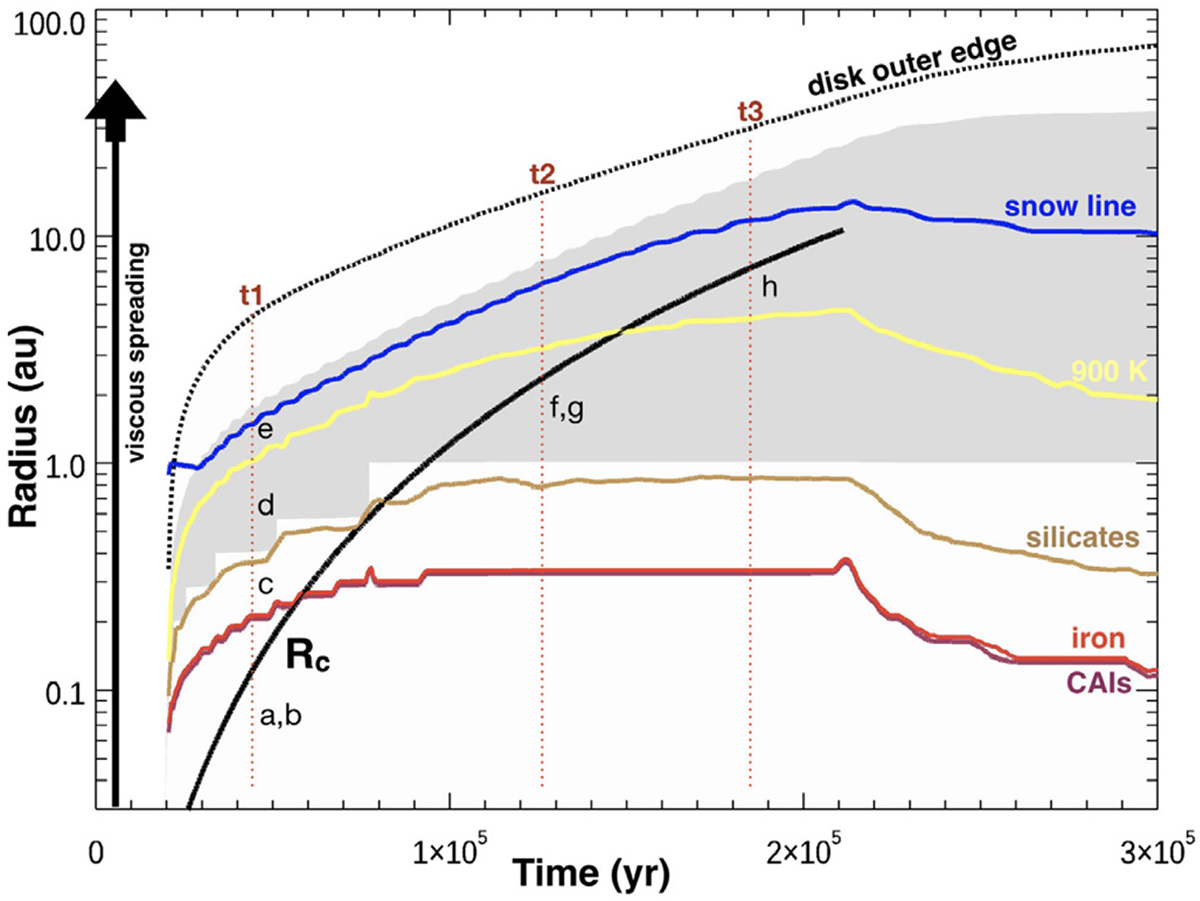Fig. 6.

Download original image
Time evolution of the centrifugal radius (assuming the canonical model of Shu 1977), the locations of the disk’s outer edge and of different condensation fronts, as labeled. The grey zone denotes a region where α is assumed to be lower than in the other parts of the disk (a.k.a. dead-zone). Processes taking place at three snapshots are indicated. At t = 50 Ky (t1), Rc(t) is within the condensation fronts of the most refractory species (Ca and Al, Fe) so that all the ISM material injected in the disk is vaporized (a,b). At the same time, farther out in the disk, condensation of CAIs and iron (c) and silicates (d) takes place from a gas which is spreading outward. Iron condensed and transported with the spreading gas can be processed farther out (e). At 120 Ky (t2), Rc(t) has reached a region in the disk where the temperature is below 1500 K. Presolar refractory material and silicates can be injected into the disk without being vaporized (f) but they can experience thermal processing (g). At 180 Ky (t3), the material from the parent cloud is injected into the disk’s colder regions, likely retaining its primordial composition, because the temperature is too low for thermal processing (h). This figure is adapted from Pignatale et al. (2018).
Current usage metrics show cumulative count of Article Views (full-text article views including HTML views, PDF and ePub downloads, according to the available data) and Abstracts Views on Vision4Press platform.
Data correspond to usage on the plateform after 2015. The current usage metrics is available 48-96 hours after online publication and is updated daily on week days.
Initial download of the metrics may take a while.


